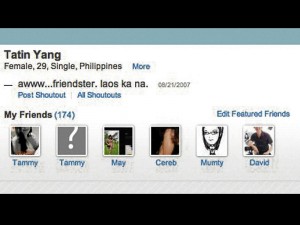
Like tens of millions of others, US technology writer Nicholas Carr found the lure of the worldwide web hard to resist — until he noticed it was getting harder and harder to concentrate.
He set out his concerns in a celebrated essay headlined “Is Google making us stupid?”
And his latest book “The Shallows” explores in depth what he fears the Internet is doing to our brains.
“The seductions of technology are hard to resist,” Carr acknowledges in that book, which has sold an estimated 50,000 hardback copies in the United States alone. But he thinks it’s time to start trying.
In a speech at last week’s Seoul Digital Forum and an interview with AFP, Carr restated his concerns that IT is affecting the way people think and feel and even the physical make-up of their brains.
Every new technology in history — like the map and the clock — changed the way people think but Carr sees special dangers in the Internet.
He got his first PC back in the 1980s and was an avid net user until “a few years ago, I noticed some disturbing changes in the way my mind worked. I was losing the ability to concentrate.”
While the Internet has enormous benefits in delivering incredible amounts of information at incredible speed, it’s also a distracting and interruption-rich environment.
Carr said it encourages quick shifts in focus — and discourages sustained attention and the ability to think deeply and creatively about one topic and to challenge conventional wisdom.
Popularity-driven search engines, in one of the ironies of an information-rich Internet, worsen the problem by leading everyone to the same sources, he said.
Social networks, while pleasurable and fun, increase distractedness by bombarding users with brief bits of information.
“We take in so much information so quickly that we are in a constant state of cognitive overload,” Carr argued.
“Multitasking erodes cognitive control. We lose our ability to say that this is important, this is unimportant. All we want is new information.”
In contrast, when readers open a printed book, “there’s nothing else going on except words on a page, no distractions. It helps train us to be deep thinkers.”
Carr, 52, told AFP he’s not optimistic society will switch off en masse but it’s important to look clearly at what it might be losing.
And he doesn’t feel quite so lonely now that some other authors and TV programme-makers have tackled the same subject. “There are signs, still sporadic and small, that people are beginning to question the effects of technology.”
Since the book came out, he said, he had heard from several companies struggling with otherwise intelligent employees who were unable to focus and concentrate on problem-solving.
Carr admitted he himself has not had great success in limiting the time he spends online. But the biggest change he made as a writer and researcher was to use the web only to track down source material.
“Then I’d make an effort to actually read those things in print. I did find that made a big difference in my ability to be attentive and a thorough reader and hopefully a deeper thinker.”
But Carr said it was not just a matter of individual choice. If friends, colleagues and employers were constantly on line, “then you feel in many ways compelled to do so even if you don’t want to, because you don’t want to damage your career or your social life”.
The author said he had no simple formula for change. But companies could “start sending a signal that’s it’s OK to be disconnected sometimes, it’s OK if you don’t respond to every email within 45 seconds or whatever”.
Employers, governments and schools could also start rewarding and encouraging people to switch off.
But Carr said there is little evidence so far of pressure for change.
“I think as a society we’re choosing information overload: we’re choosing to sacrifice the more meditative and contemplative aspects of our minds.”
AFP
 MANILA, Philippines - This coming school year, La Salle Green Hills in Mandaluyong City will issue 500 electronic tablets (e-tablets) to selected students to lessen their burden in carrying books.
MANILA, Philippines - This coming school year, La Salle Green Hills in Mandaluyong City will issue 500 electronic tablets (e-tablets) to selected students to lessen their burden in carrying books.








